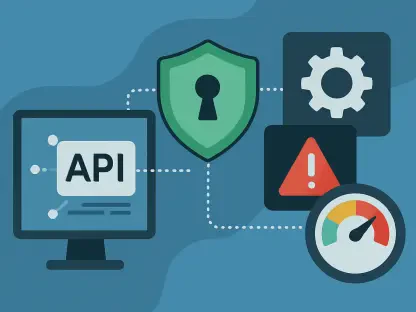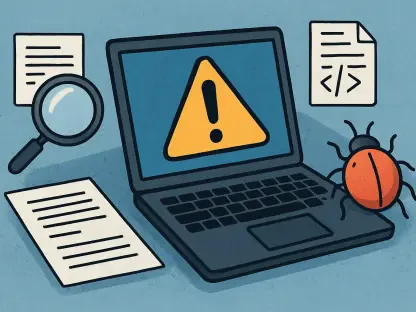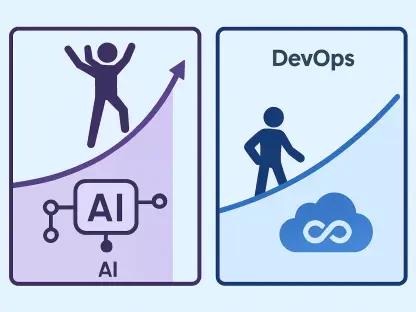In an increasingly interconnected world, safeguarding digital assets has never been more crucial. Yet, Russian hackers known as Storm-2372 have managed to breach Microsoft 365 accounts with alarming success. Their sophisticated phishing campaign exploits device code authentication, a mechanism typically used by devices like printers and smart TVs that lack conventional web browsers. The cunning nature of this technique prompts users to authenticate through a fake link, which grants the attackers access tokens, circumventing the need for passwords or multi-factor authentication (MFA). This innovative phishing method highlights the evolving tactics that hackers employ to infiltrate high-value targets, posing a significant threat to sectors like government agencies, businesses, IT services, telecommunications, and NGOs across various regions, including North America, Africa, Europe, and the Middle East.
The Complex Mechanics of Device Code Phishing
Device code phishing is a particularly devious form of attack because it exploits the way non-browser devices authenticate with Microsoft 365 services. The hackers send phishing emails that mimic legitimate Microsoft Teams invites, encouraging the unsuspecting recipient to follow a link to an authentication page. This fake page prompts the user to enter a device code, ostensibly to verify their identity. Once the code is entered, the attackers gain access to the user’s authentication tokens. These tokens can then be used to infiltrate the victim’s accounts without the need for their actual password or even MFA, bypassing these critical security measures entirely.
The success of this method lies in its ability to mimic genuine interactions and create a sense of urgency or legitimacy. For example, the use of messaging apps like Microsoft Teams, Signal, and WhatsApp for initial contact helps build trust. Victims are more likely to believe the phishing email is authentic if they’ve already had what seems to be a legitimate conversation. Once the victim clicks on the fake link and inputs the device code, the attackers have a free pass to their Microsoft 365 accounts. This compromised access allows for further phishing attempts, creating a vicious cycle within the victim’s network. The attackers can then use the victim’s email to disseminate additional phishing emails, extending their reach and potential impact.
Targeting High-Value Sectors Across Regions
The sophistication of these phishing attacks is matched by their selective targeting of high-value sectors. Government agencies, businesses, IT services, telecommunications, and NGOs are prime targets, particularly in geographically diverse regions such as North America, Africa, Europe, and the Middle East. These sectors are often repositories of sensitive data and intellectual property, making them lucrative targets for cyber espionage. Attackers like Storm-2372 are persistent in evolving their tactics to remain one step ahead of security measures, enhancing their success rates dramatically.
The impact on these sectors can be devastating, leading not just to the loss of sensitive information but also to potential financial losses and reputational damage. For example, a breach in a government agency could lead to the exposure of classified information, while a breach in a telecommunications company could disrupt services, affecting millions of users. In the IT services sector, a breach could compromise client data across multiple industries, amplifying the attack’s effect. NGOs, often involved in humanitarian work, can find their operations severely disrupted, potentially putting lives at risk. These high stakes underscore the importance of understanding and mitigating such sophisticated cyber threats.
Microsoft’s Response and Mitigation Strategies
In response to these advanced phishing strategies, Microsoft has stepped up its efforts to track and counteract Storm-2372’s activities. The tech giant has been proactive in notifying affected parties directly and issuing comprehensive security advisories. Among the key recommendations is the stringent enablement of device code flow only when absolutely necessary. Organizations are also advised to revoke phished device codes immediately and require re-authentication through conditional access policies. These measures are crucial in curtailing the attackers’ ability to exploit device code phishing tactics.
Moreover, Microsoft’s continuous engagement with this issue involves educating users about recognizing phishing attempts and staying vigilant about suspicious communications. For example, users are encouraged to verify the authenticity of any unsolicited email or message, even if it appears to come from a known contact. The integration of more advanced security features, such as real-time threat detection and automated response systems within Microsoft 365, also forms a part of the defensive strategy. While no system can be entirely foolproof, these integrated layers of security significantly reduce the risk of successful phishing attacks.
The Way Forward: Enhanced Awareness and Proactive Defense
Phishing attacks are becoming increasingly sophisticated, targeting high-value sectors such as government agencies, businesses, IT services, telecommunications, and NGOs in diverse regions like North America, Africa, Europe, and the Middle East. These areas are prime targets as they often store sensitive data and intellectual property, making them attractive for cyber espionage. Attackers like Storm-2372 continually refine their strategies to outpace security measures, significantly boosting their success rates.
The consequences for these sectors can be severe, resulting in the loss of sensitive information, financial losses, and damage to reputations. A breach in a government agency could expose classified information, while one in a telecommunications firm might disrupt services for millions. In the IT services sector, a breach could compromise client data across different industries, magnifying the attack’s effects. NGOs involved in humanitarian work could see their operations crippled, potentially endangering lives. These high stakes highlight the critical need to understand and counter such advanced cyber threats.









